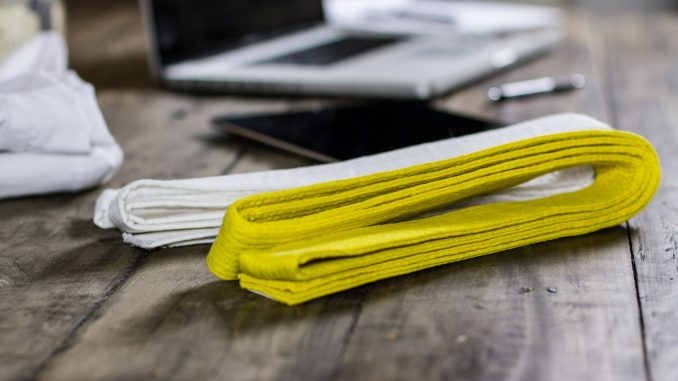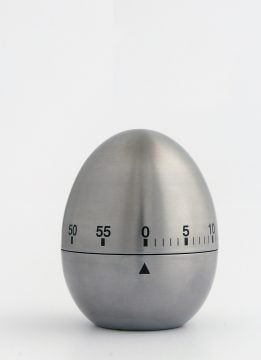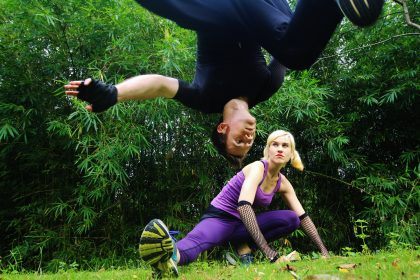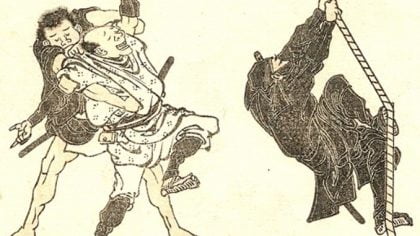How long does it take to learn a martial art, as a beginner? When would you get good enough to use it? And what exactly does proficiency in martial arts mean to a beginner?
The first time you feel like you’ve internalized a technique (with decent skill) is a life-changing experience. You grow more confident and become less shy when training.
Note: Where part one answers the question of how long it takes to get a black belt, this article explores how long it takes to gain beginner’s proficiency.
Why knowing when basic techniques kicks in is important?
When I was a beginner, I had no confidence in my ability to learn. It was the same in Aikido, as it was in Taekwondo (when I was seven). Not having benchmarks to understand if I was making progress, like the average person was, made me paranoid.
Was I abnormally slow? When would my technique be decent? How would I know? If only there was someone telling me when techniques would start clicking in my head.

As I moved up the ranks, I partnered with many white belts who had the same anxiety. Most looked at my face for some feedback to tell if they had performed a technique well enough. It seems this uncertainty is common to beginners – and some were more paranoid than the others.
For the sake of motivation, I believe it’s important to give beginners expectations on when they may first experience the flow state; when technique kicks in, and work effectively enough. This gives white belts (and potential students) something to look forward to.
While many would argue that the first grading is a good indicator of progress, let’s quantify the average time.
What is basic proficiency in martial arts?
Obviously, being martially proficient as a beginner doesn’t mean competency in fighting or self-defense. That’s way beyond the level of a white belt. Instead, it means being good enough in a basic set of techniques, to the degree of knowing how to punch, kick, block, or parry (depending on the combat style you train in).
While the time needed varies depending on the style, syllabus, and dojo, the study (summarised) below covers the average time to become good enough at the basics.
Time Needed as a Beginner to Become Good at a Martial Art
So how long does it take to learn a martial art at a basic level of proficiency?

To answer this, we refer to the study Martial Arts: Time Needed for Training (2010) that recruited 15 volunteers with no martial arts experience to learn 21 different techniques (both offensive and defensive). Out of the 15 volunteers (aged between 27- to 50-years-old), 14 were female.
The study tasked two black belt martial artists to instruct the volunteers for 45 training sessions, which lasted 45 minutes each. What they wanted to find out was how long it took for beginners to demonstrate proficiency in 21 techniques.
Here’s what they found (that you should be aware of as a beginner, or instructor)…
The average number of sessions needed for the easiest and most difficult technique

Even something as simple as the ready stance took as long as 27 sessions (on average) to get good at. The most difficult technique was the rear elbow strike to face, which took 38.3 sessions.
Proficiency is isolated
Predictably, even after the experiment, not one person was good at all 21 martial techniques. Improvement in the various techniques came at an equal time frame.
Shocking failure rate (with lesser practice)
Since the volunteers “mastered” some martial techniques earlier than others, the instructors shifted the focus to the challenging techniques. This resulted in at least half of the volunteers regressing into failure for the simpler techniques that they had previously “mastered” during the final test.
So, getting good at a martial technique, especially as a beginner, does not mean retaining that proficiency. Beginners and intermediate martial arts practitioners need to constantly review and practice. Otherwise, they’d lose the skills that were acquired earlier.
Lower than average proprioception
Proprioception is the ability to perceive how your body parts are moving in relation to one and another. It also helps you perceive where your body will end up in a state of motion.
What’s clear from training in the rear elbow strike to face technique is that the volunteers found it challenging to aim the strike at the nose. This was likely due to poor intuitive perception in movement.
So, as a beginner, it takes much longer to get the intuitive feel and accuracy of executing a technique. The skill of proprioception comes into play after training for a much longer time.
Bottom line: How long does it take to learn a martial art with basic proficiency?

29 hours on average.
Assuming that you are training two sessions of one hour each week, you will take roughly 3 to 4 months to be good enough.
However, being complacent in training will make you lose your competency very quickly. Also, it will take longer to be accurate at striking, as it involves an intuitive understanding of combat movement.
Even though the sample size of 15 people is not statistically representative, the study at least gives us insight on what blindspots to look out for when learning a new martial art.
If you are interested instead in how long it takes to get a black belt, read this. That was the first part in this series about martial arts mastery and proficiency.
Articles in this series (including upcoming ones)
- Black-belt: How Long Does It Take to Get a Black Belt?
- Mastery: How long does it take to master a martial art?
- Why So Curious About How Long It Takes to Get a Black Belt?
- How to Get a Black Belt Fast? Speeding up Martial Arts Mastery






